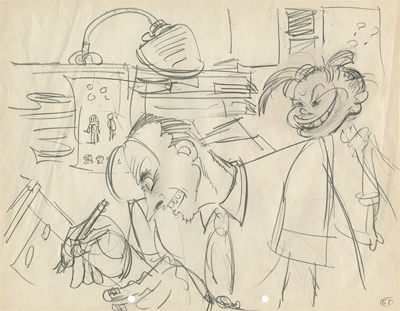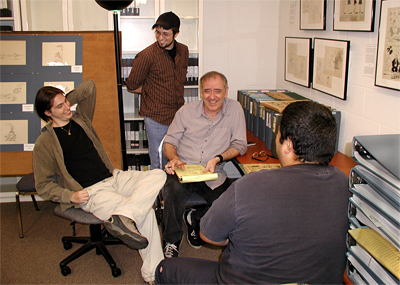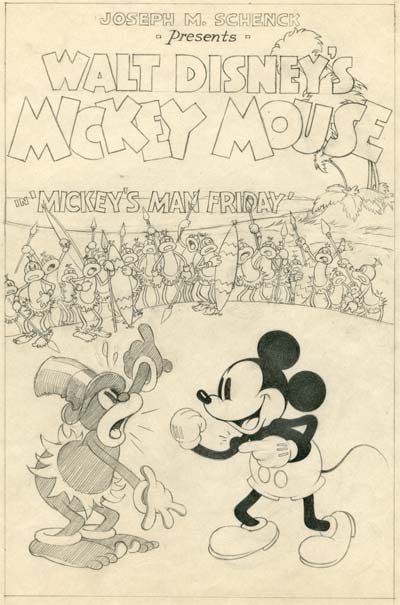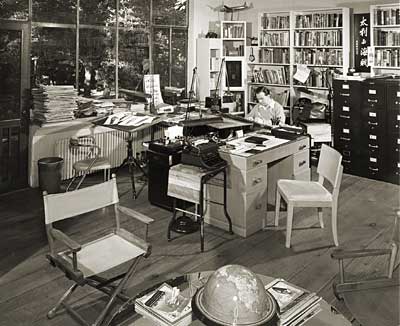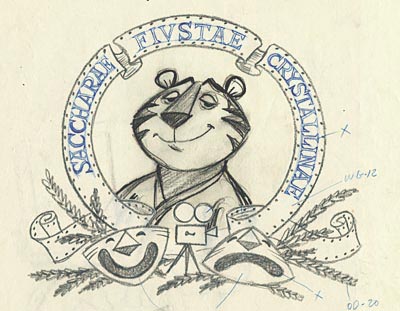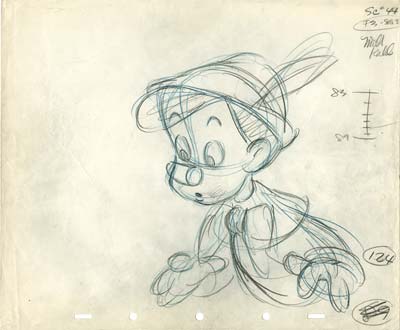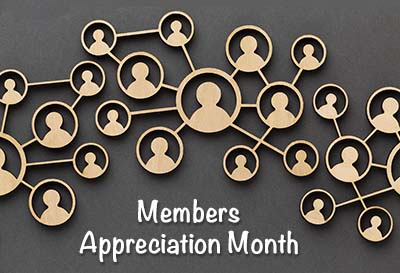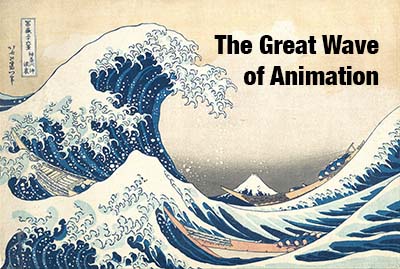

![]() In 1982, Stephen Worth was a student at UCLA studying design. He attended an event hosted by The International Animated Film Society: ASIFA-Hollywood and had the opportunity to speak with the organization’s President, the legendary cartoon Producer, Story Man and Voice Artist, Bill Scott. Scott shared with Worth an idea he was nurturing. He described his plans to create an “Animateque”- a research facility for animation professionals and students. Steve never forgot that meeting. “The resources weren’t there to pull it off during Bill’s tenure as President of ASIFA-Hollywood. But a few years ago, I remembered Bill’s idea and realized that computers had made organizing educational material much easier. The concept of a “digital Animateque” excited me. I guess you could say that when Bill passed away, his passion for the idea was transferred to me.”
In 1982, Stephen Worth was a student at UCLA studying design. He attended an event hosted by The International Animated Film Society: ASIFA-Hollywood and had the opportunity to speak with the organization’s President, the legendary cartoon Producer, Story Man and Voice Artist, Bill Scott. Scott shared with Worth an idea he was nurturing. He described his plans to create an “Animateque”- a research facility for animation professionals and students. Steve never forgot that meeting. “The resources weren’t there to pull it off during Bill’s tenure as President of ASIFA-Hollywood. But a few years ago, I remembered Bill’s idea and realized that computers had made organizing educational material much easier. The concept of a “digital Animateque” excited me. I guess you could say that when Bill passed away, his passion for the idea was transferred to me.”
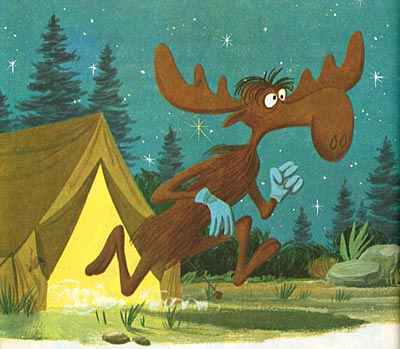
Bill Scott, the voice of Bullwinkle J. Moose, came up with the original idea of an “Animateque” devoted to the art of animation.
After 20 years as an animation Producer, Stephen Worth decided it was time to give back to the muse. He went to work full time at ASIFA-Hollywood to try to build support for Bill’s concept of the Animateque. “The animation business is in dire need of inspiration and new ideas,” Worth explains. “I kept reading in the trades that traditional animation techniques were dead and artists would soon be replaced by technology. But I know from working with innovative filmmakers like Ralph Bakshi and John Kricfalusi that the principles that created Pinocchio and Bugs Bunny are the same ones that will lead new technologies to the same heights reached in the ‘golden age’ of animation. The technology is just a tool. The artist is the one who creates. We need to invest in artists.”
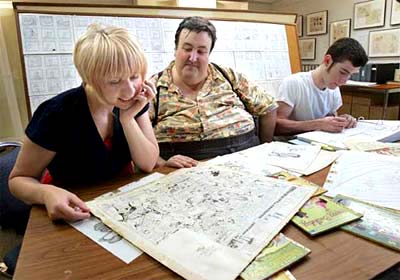
Katie Rice, Stephen Worth and David Gemmell refer to artwork in the collection of Animation Resources. (photo: Lori Shepler)
Almost overnight, Worth established a world class facility for self-study and research into the art of animation. Housed in a storefront in Burbank, the ASIFA-Hollywood Animation Archive provided information, digitized animated films, assembled biographical information and prepared high resolution scans of artwork for use by countless animators, educators, art students and researchers. The facility became world famous through its exhaustive website and extensive collection of material from the personal files of legendary animators like Grim Natwick, Les Clark, Michael Lah, Herb Klynn and John Kricfalusi. A dedicated group of volunteers worked tirelessly digitizing and cataloguing the material, guaranteeing that future generations will be able to benefit from the valuable information.
Studio gag drawing of Grim Natwick at the Ub Iwerks Studio with his "kid assistant" Chuck Jones. Jones would go on to become one of the most influential directors in the history of animation.
In January of 2011, ASIFA-Hollywood informed Worth that regrettably they were no longer able to sponsor his project. Worth wasn’t willing to let Bill Scott’s dream end there, so he scrambled to create a permanent organizational umbrella for the collection. He established Animation Resources, a 501(c)(3) California non-profit organization dedicated to supporting and encouraging animation education. The core of Animation Resources’ offerings is Stephen Worth’s valuable research and curation efforts and the generous efforts of the dozens of dedicated volunteers who dedicated their time and energy to creating this resource.
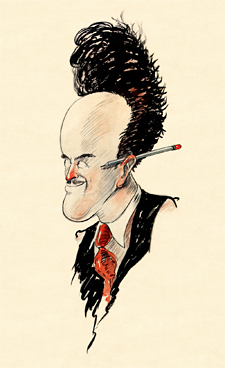
This self portrait from 1931 was found in a trash can at a local TV cartoon studio. No one knows how the drawing got there and no one at the studio could identify him. At a reunion of animators from the most successful animated feature of recent times, this sketch was shown to a hall full of employees from the studio this man made famous- not a single person recognized him.
Read more about Why We Need an Animation Archive.
About the Collection
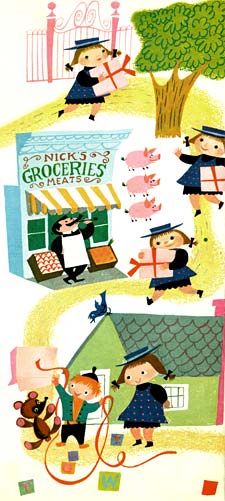
![]() The archive database of Animation Resources consists of biographical information, images and filmographic data culled from from a variety of sources. In a remarkably short span of time, the collection grew to contain over 6,000 digitized animated films and over 125,000 high-resolution images. These assets are searchable by keywords, and all of the data is cross-linked within the database structure.
The archive database of Animation Resources consists of biographical information, images and filmographic data culled from from a variety of sources. In a remarkably short span of time, the collection grew to contain over 6,000 digitized animated films and over 125,000 high-resolution images. These assets are searchable by keywords, and all of the data is cross-linked within the database structure.
This means that it is possible to search for an artist’s name and find his biography and filmography, then click through to watch a digitized movie file of a film he worked on. One more click reveals animation drawings by that artist from that particular film. “It’s a way of organizing information that’s never been attempted before,” says Worth. At this point, the database is not available on the internet, but plans are in the works to build the infrastructure required to share the entire collection online with the world.
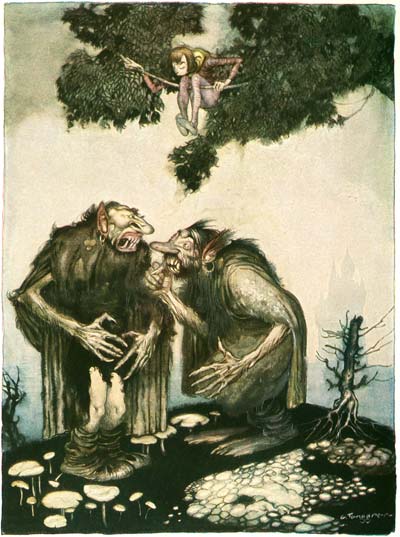
In the "golden age" of animation, production designers didn’t look to other cartoons for inspiration on how their films should look… they looked to classic illustration, like that of Gustaf Tenggren. Animation Resources’s archive database includes hundreds of illustrated children books, each one bursting at the seams with new ideas for how animated films can look.

![]() “The purpose of Animation Resources is to be an archive FOR animators, not just an archive OF animation.” Worth explains. “Because of this, the collection doesn’t just include animated films and related artwork, but art instructional material and a wide range of items dealing with the history of cartooning and illustration as well.” The collection is basically the world’s largest artist’s “clip file”- children’s book illustrations by Rackham and Dulac, magazine cartoons by Virgil Partch and Erich Sokol, superhero comics by Jack Kirby and Jack Cole, newspaper comics by Cliff Sterrett and Milton Caniff, drawing instruction by Preston Blair and Willy Pogany… a whole world of inspiration for artists and cartoonists.
“The purpose of Animation Resources is to be an archive FOR animators, not just an archive OF animation.” Worth explains. “Because of this, the collection doesn’t just include animated films and related artwork, but art instructional material and a wide range of items dealing with the history of cartooning and illustration as well.” The collection is basically the world’s largest artist’s “clip file”- children’s book illustrations by Rackham and Dulac, magazine cartoons by Virgil Partch and Erich Sokol, superhero comics by Jack Kirby and Jack Cole, newspaper comics by Cliff Sterrett and Milton Caniff, drawing instruction by Preston Blair and Willy Pogany… a whole world of inspiration for artists and cartoonists.
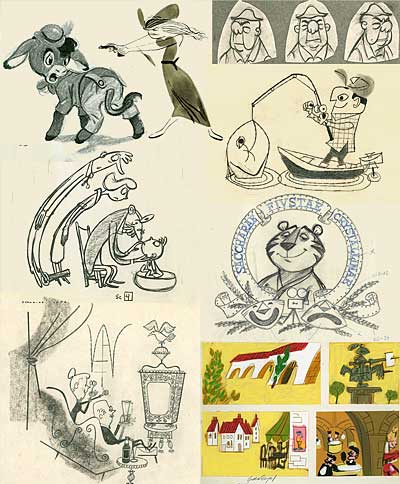
The animation related material in the collection includes storyboards, animation drawings, production correspondence, exposure sheets, publicity materials, production photos, model sheets, pencil tests, background paintings, and more.

Digitized films in the collection include rare cartoons by the Fleischers, Terry-Toons, Iwerks, Lantz and Columbia studios. “These are primarily films that have never been released to home video. Many of them haven’t been broadcast on television since the 50s or 60s. We’re specializing in the studios that don’t currently have extensive commercial distribution.” says Worth. Animation historians like John Canemaker, Leonard Maltin, Jerry Beck and Mark Kausler have been supporting the project as well by sharing valuable research and helping to acquire rare animated films for digitization.
Animation Resources’s archive database contains information on influential women animators like Lotte Reiniger, the creator of the oldest surviving animated feature.
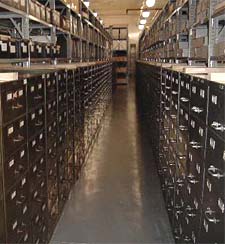
![]() Traditionally, libraries and archives have limited access to their collections in the interest of preservation. Delicate paper and film stock requires special handling and cannot stand up to the rigors of general circulation among artists and students. In most archives, collections are donated unsorted by the boxload. An archivist must go through piece by piece inventorying, stabilizing and storing the items before they can begin to be utilized. This process typically takes several years. Once the collection has been inventoried and shelved, a curator is brought in to examine the holdings and determine a contextual format- a book, an exhibit, an article- that will make the public aware of the collection and its importance. Curation can take another year or longer, and by this time five or six years may pass before the public is even aware that the collection exists.
Traditionally, libraries and archives have limited access to their collections in the interest of preservation. Delicate paper and film stock requires special handling and cannot stand up to the rigors of general circulation among artists and students. In most archives, collections are donated unsorted by the boxload. An archivist must go through piece by piece inventorying, stabilizing and storing the items before they can begin to be utilized. This process typically takes several years. Once the collection has been inventoried and shelved, a curator is brought in to examine the holdings and determine a contextual format- a book, an exhibit, an article- that will make the public aware of the collection and its importance. Curation can take another year or longer, and by this time five or six years may pass before the public is even aware that the collection exists.

In the era of YouTube and Google, this is beginning to change. Digital technology removes the problems associated with storage and preservation of vintage artifacts. Once digitized, a film or piece of artwork can efficiently and inexpensively be backed up and distributed, making open access a possibility. Without physical objects to catalog and store, archivists are able to shorten the time it takes to prepare a group of items for public access. This allows the collection to be curated as it is assembled. The curator isn’t limited by the pool of material that he has to work with. He is free to actively solicit outside sources for material that fills in gaps in the rest of the collection and relates to the concepts he is trying to put across. Most collectors are more than happy to share a digital copy of their items.

Ralph Bakshi, the animator who was responsible for bringing about the modern age of animation has written several inspiring articles for the Animation Resources blog and has contributed material to the collection. The storyboard section above is from Bakshi’s "Cool World" and was drawn by Louise Zingarelli.
Supplementing Animation Education
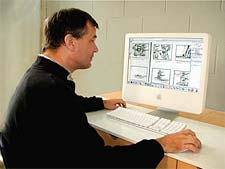
![]() Animation Resources is intended to serve creative professionals and students of the artform who are looking to develop the necessary skill set to become an accomplished animator. These artists have a tough road to haul. They are facing an industry where the quest for technical knowledge has often times eclipsed the need to develop artistic proficiency. Schools and universities don’t have the time and resources to provide their students with all of the experience required to be a professional animator. So they focus on the most immediate and practical elements and expect the students to acquire the creative and artistic aspects of their education on their own.
Animation Resources is intended to serve creative professionals and students of the artform who are looking to develop the necessary skill set to become an accomplished animator. These artists have a tough road to haul. They are facing an industry where the quest for technical knowledge has often times eclipsed the need to develop artistic proficiency. Schools and universities don’t have the time and resources to provide their students with all of the experience required to be a professional animator. So they focus on the most immediate and practical elements and expect the students to acquire the creative and artistic aspects of their education on their own.
In tough economic times, the studios cut budgets for in-house training, so the young artists aren’t able to pick up the fundamentals on the job either. It’s a difficult situation, and many students of animation aren’t even aware of the vital need for self-study until after they have graduated and joined the ranks of job hunters. By that time, it may be too late for them to pick up the creative skills they need to be a productive employee in animation.
Story artist Eddie Fitzgerald offers storyboarding tips to volunteers Michael Fallik, Max Ward and Art Fuentes.
Joseph Baptista, a student intern on the project who is now a professional animator comments, “Doing an exercise for a class at school, you’re not really sure how it fits in functionally and how those principles apply to a real world job. You just do it for a letter grade and you move on. But if you are trying to learn to animate, the best way is to first learn about the principle, and then to try to understand how it was applied through analyzing and imitating the work of great artists.” Worth set out to fully integrate an educational mission into the structure of Animation Resources. Educational material is accompanied by contextual information to help a student fully understand and absorb it and is accompanied by real-world examples of the principles in use. Through self-study, a student learns to recognize principles among the art in the vast collection and, with practice and determination, begins to master the techniques for themselves.

The family of legendary animator, Carlo Vinci has been sharing artwork from Vinci’s fifty year career in animation. The collection includes a number of class assignments from his studies at the prestigious National Academy of Design, documenting the education of a golden age animator.

![]() The animators who created the classic cartoons of the 1930s and 40s did not attend animation schools. They studied fine art- life drawing, sculpting, and painting- and learned the nuts and bolts of animation after graduation on the job. In those days, animators were trained as a part of apprenticeship systems. An experienced animator would take fledgling artists under his wing and train them to assist his scenes as they worked their way up the ladder of production. A young artist would start as an assistant, then graduate to animator, and perhaps eventually to director, learning as he worked.
The animators who created the classic cartoons of the 1930s and 40s did not attend animation schools. They studied fine art- life drawing, sculpting, and painting- and learned the nuts and bolts of animation after graduation on the job. In those days, animators were trained as a part of apprenticeship systems. An experienced animator would take fledgling artists under his wing and train them to assist his scenes as they worked their way up the ladder of production. A young artist would start as an assistant, then graduate to animator, and perhaps eventually to director, learning as he worked.
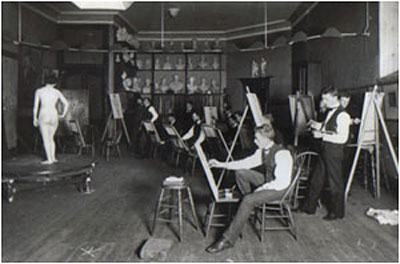
Students at the National Academy of Design in the early 1920s. Traditional art studies from the past form the foundation for artists of the future.
However, changes in the business environment in animation in the 1960s and 70s stopped this system in its tracks. Studios were downsizing and sending work overseas. Experienced “old timers” who possessed the accumulated knowledge of decades of experience were retiring without passing along their techniques to the next generation. By the mid 1970s, it looked as if animation was a dying artform in the United States. A few animators, most notably Eric Larson, Ralph Bakshi and Richard Williams refused to let the artform die, and acted as a bridge across the gap, instituting training programs at the studios where they worked. Most successful animators today who got their start in the early 1980s have one of these three men to thank for their careers.
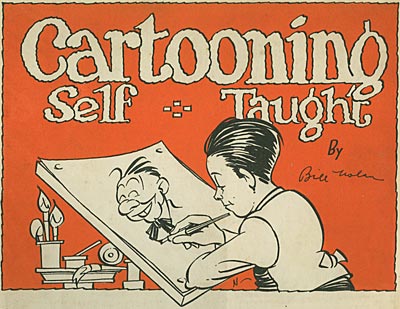
In the 21st century animation business, the employment of an animator only lasts the life of the project, and the ladder of upward mobility is either weak or non-existent. Art schools have largely shifted towards a “trade school” approach, focusing on technical skills like proficiency in Flash and Maya instead of classical art training. This leaves young animators without a means of developing their craft and growing as an artist. Animation Resources steps into the breech, acting as an adjunct to animation schools and training programs, encouraging students to begin an organized program of creative self-study early on so they will be prepared when the time comes to find a job in the industry.
Animation Resources hosts an online drawing course based on Preston Blair’s "Advanced Animation".
“Everything an animator needs to know is in those old films and sketches.” Worth explains. “The great animators of the past may no longer be with us, but that doesn’t mean that we can’t still learn from them. It doesn’t matter if artists animate using a pencil or a computer. The fundamental principles are the same. All a student of animation today needs is access to the material, a mind for analyzing what makes a scene work, and lots and lots of practice.” Animation Resources is trying to help fill the gap by providing a facility for artists to study core art skills and encouraging them to carry the art form forward.
Animation Resources’s archive database contains many one-of-a-kind treasures from the estates of legendary animators like Les Clark and Grim Natwick.
You might wonder where the funding to accomplish all of the things Animation Resources is doing is coming from. “We’re very much flying by the seat of our pants.” Worth admits. “Thankfully, there are a lot of great people who believe in this idea who are willing to support it through individual donations. The student volunteers are enthusiastic too and are willing to roll up their sleeves and make it happen. Everything is on an achievable level and momentum is building to allow us to take on even more in the future.”
Milton Caniff at work in his studio in the late 40s. The estate of Caniff, the creator of Steve Canyon and Terry and the Pirates, has shared original artwork and biographical material with Animation Resources.

![]() The full collection is not yet able to be shared online, but a wonderful selection of images and information are available on the Animation Resources blog, which can be found at www.animationresources.org. The website contains thousands of images and streaming videos, along with biographical articles and information on the progress of the project itself. According to Stephen Worth, the blog serves over a quarter of a million articles a month to over 1.5 million unique visitors. “Our web traffic comes from around the world. We’ve heard from artists as far away as Japan, Kazakhstan and Italy who follow our progress on the internet every day.”
The full collection is not yet able to be shared online, but a wonderful selection of images and information are available on the Animation Resources blog, which can be found at www.animationresources.org. The website contains thousands of images and streaming videos, along with biographical articles and information on the progress of the project itself. According to Stephen Worth, the blog serves over a quarter of a million articles a month to over 1.5 million unique visitors. “Our web traffic comes from around the world. We’ve heard from artists as far away as Japan, Kazakhstan and Italy who follow our progress on the internet every day.”
“The next step for us is to establish a steady stream of revenue to fund the sustained growth of the project,” says Worth. “I see in my head a full brick and mortar museum dedicated to animation with satellite facilities all over the world. I’m willing to do whatever I can to make this a reality. There are a lot of other people here who love animation and are happy to help. I don’t think it’s an unattainable goal.”
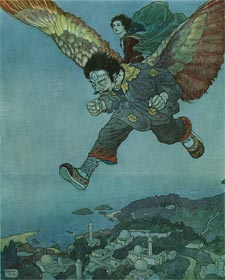
![]() Part of what makes Animation Resources so unique is that they are so progressive and yet so willfully different from other archives. Their unique vision is encapsulated in a remark from Worth, “I’m not a library science person, I’m an animated film-maker, so I don’t know what normal is for a facility like this. I do know what animators need and how they need it organized so they can use it. That’s what I’m trying to build.” This pro-access and pro-digital approach is refreshing. Animation Resources is clearly designed by and for animators. These specialized artists not only need to understand the basic elements of form, design, and nuances of character performance, but how to rigorously time and structure the creation of their art down to 1/24th of a second. It’s a big challenge and it requires a good education.
Part of what makes Animation Resources so unique is that they are so progressive and yet so willfully different from other archives. Their unique vision is encapsulated in a remark from Worth, “I’m not a library science person, I’m an animated film-maker, so I don’t know what normal is for a facility like this. I do know what animators need and how they need it organized so they can use it. That’s what I’m trying to build.” This pro-access and pro-digital approach is refreshing. Animation Resources is clearly designed by and for animators. These specialized artists not only need to understand the basic elements of form, design, and nuances of character performance, but how to rigorously time and structure the creation of their art down to 1/24th of a second. It’s a big challenge and it requires a good education.
Certainly the professional world contains a scattered sampling of people as committed to their medium as Stephen Worth and his group of dedicated volunteers, but it’s extremely rare to find such a concentrated few in any one place. Their passion and co-operation are achieving great things. Archivists and librarians might have a lot to learn from these animators. Animation Resources is rapidly becoming the model of what the “21st century archive” must become.
A rough animation drawing by the legendary Milt Kahl. The animation of the past is being put back to work, educating and inspiring the animators of the future.
Hopefully, seeing the incredible work of artists of the past will inspire current artists to set the bar higher. There is no reason why animation can’t be better than classic cartoons. The technology is better and there’s no lack of talent. All young cartoonists need is a foundation of knowledge to build upon. Worth expands upon this point, “What point is there pickling the past in formaldehyde and setting it up in bottles on a dusty shelf? The past should be put to work informing the present and helping to improve the future.” It’s clear that the people behind Animation Resources don’t think small.
Animation Resources depends on the support of the people who benefit from it. If you feel that this website is of value to you, we encourage you to contribute, volunteer and support the project. With your help, Animation Resources can grow. Together, we can take the project forward.
Other Articles About Animation Resources
Animation Resources’ Goals and Projects
The Officers and Board of Animation Resources
KCET: Animation Resources Aims To Build A Massive Digital Archive Of Cartoon Art
For the past decade, Animation Resources has been serving artists working in the fields of animation, cartooning and illustration. Our volunteers and members have pulled together to raise the bar for our art form, and it’s time to celebrate… It’s Members Appreciation time again!
During the month of February, Animation Resources expresses our appreciation for to members with a very special Reference Pack, and we invite you to become a member too. For the next 30 days, we will be sharing reasons why you should join us. Our benefits of membership far exceed the cost of our annual dues.
This year, we are trying something new to encourage new memberships. You can join for a one week trial membership for only A DOLLAR! Yes, you get access to everything our annual members get for seven days for only a buck. (Click here for the details on our Dollar Days.) What are you waiting for?
You can find out what our members get at the Member Appreciation Page. It’s easy to join. Just click on this link and you can sign up right now online…
JOIN TODAY!
https://animationresources.org/membership/levels/
![]()
![]() Animation Resources depends on your contributions to support its projects. Even if you can’t afford to join our group right now, please click the button below to donate whatever you can afford using PayPal.
Animation Resources depends on your contributions to support its projects. Even if you can’t afford to join our group right now, please click the button below to donate whatever you can afford using PayPal.














